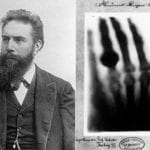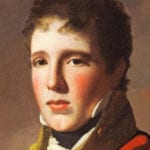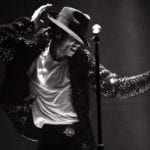 Our World
Our World  Our World
Our World  Pop Culture
Pop Culture 10 Incredible Female Comic Book Artists
 Crime
Crime 10 Terrifying Serial Killers from Centuries Ago
 Technology
Technology 10 Hilariously Over-Engineered Solutions to Simple Problems
 Miscellaneous
Miscellaneous 10 Ironic News Stories Straight out of an Alanis Morissette Song
 Politics
Politics 10 Lesser-Known Far-Right Groups of the 21st Century
 History
History Ten Revealing Facts about Daily Domestic Life in the Old West
 Weird Stuff
Weird Stuff 10 Everyday Products Surprisingly Made by Inmates
 Movies and TV
Movies and TV 10 Actors Dragged out of Retirement for One Key Role
 Creepy
Creepy 10 Lesser-Known Shapeshifter Legends from Around the World
 Our World
Our World 10 Science Facts That Will Change How You Look at the World
 Pop Culture
Pop Culture 10 Incredible Female Comic Book Artists
 Crime
Crime 10 Terrifying Serial Killers from Centuries Ago
Who's Behind Listverse?

Jamie Frater
Head Editor
Jamie founded Listverse due to an insatiable desire to share fascinating, obscure, and bizarre facts. He has been a guest speaker on numerous national radio and television stations and is a five time published author.
More About Us Technology
Technology 10 Hilariously Over-Engineered Solutions to Simple Problems
 Miscellaneous
Miscellaneous 10 Ironic News Stories Straight out of an Alanis Morissette Song
 Politics
Politics 10 Lesser-Known Far-Right Groups of the 21st Century
 History
History Ten Revealing Facts about Daily Domestic Life in the Old West
 Weird Stuff
Weird Stuff 10 Everyday Products Surprisingly Made by Inmates
 Movies and TV
Movies and TV 10 Actors Dragged out of Retirement for One Key Role
 Creepy
Creepy 10 Lesser-Known Shapeshifter Legends from Around the World
10 Historical Events That Didn’t Happen Like You Think They Did
Sometimes history gets easily distorted. We don’t always have enough sources of information to say with certainty what really happened. In other cases, it’s the exact opposite. Too many sources make it hard to separate fact from fiction. And, once enough time passes, perception becomes reality. One version is adopted as the universal truth for a particular event, regardless of whether it was actually true or not.
10The Suffragette Movement
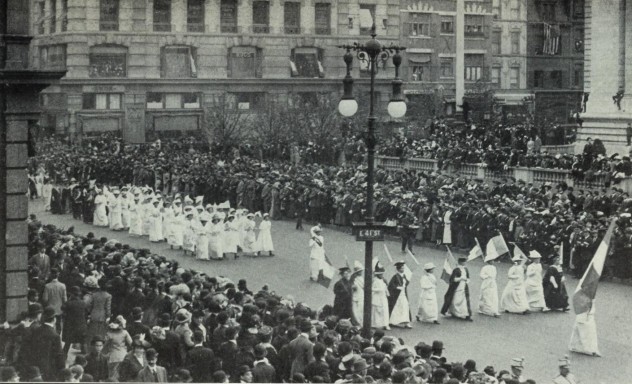
The suffragette movement is seen as a milestone in women’s rights (or human rights, for that matter). It was a 19th-century movement for women to collectively stand up in many places around the world and demand rights equal to those of men, particularly the right to vote. In the US, the fight for women’s rights started even before the Civil War, but it wouldn’t be until the early 20th century that it would actually start to pick up some steam.
Surely, the suffragettes enjoyed the support of every woman, and all the people who opposed women’s rights were sexist, misogynistic men who thought that politics were too complicated for women, right? Well, not really. There were, in fact, plenty of women who opposed the suffragette movement. One of the reasons behind this stance was the idea that men and women have naturally different spheres of influence that should remain different. Other reasons were that women already influenced social reforms, albeit not through voting, and even that women had no practical reason to deal with military, naval, diplomatic, financial, and other types of policies which are standard in government.
Prominent anti-suffragists included novelist Mary Ward, playwright Florence Bell, and Oxford principal Elizabeth Wordsworth. When the movement picked up steam in the United Kingdom, the Women’s National Anti-Suffrage League was formed. It lasted for 10 years before being merged with a similar men’s organization. During this time, the league opened over 100 branches.
9The Emancipation Proclamation
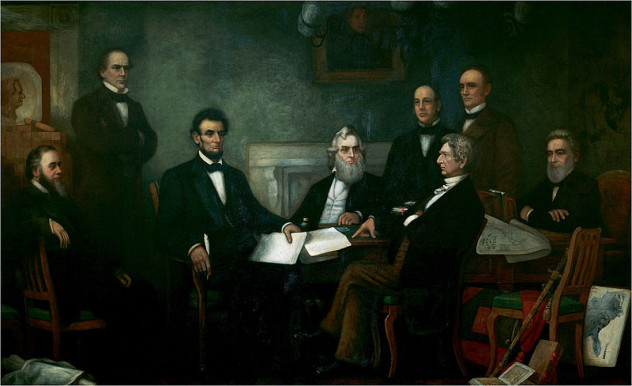
Abraham Lincoln’s Emancipation Proclamation, issued on January 1, 1863, was a big step for equality, but it was not exactly the huge leap many people think it was. Specifically, the idea that the Emancipation Proclamation freed the slaves is not entirely true. It actually freed only the slaves in the Confederacy states that were in rebellion.
The executive order was carefully worded in order to make some significant exclusions. For starters, border states that were loyal to the Union were left out of the proclamation, as were the Confederacy states that were already under Union control. This way, the chances that these states would shift allegiances decreased. Even so, the Emancipation Proclamation still carried a lot of value. Emancipated black men, known as freedmen, were allowed to join the Union army which gained approximately 200,000 extra soldiers and sailors courtesy of the order.
Unofficially, the Emancipation Proclamation put the idea of freedom into the minds and hearts of the people and gave the Union a moral superiority which helped bolster its support and morale. The importance of this historical order cannot be denied, but it was actually the 13th Amendment (written two years later) that actually abolished slavery all throughout the US.
8Northeast Blackout Of 1965
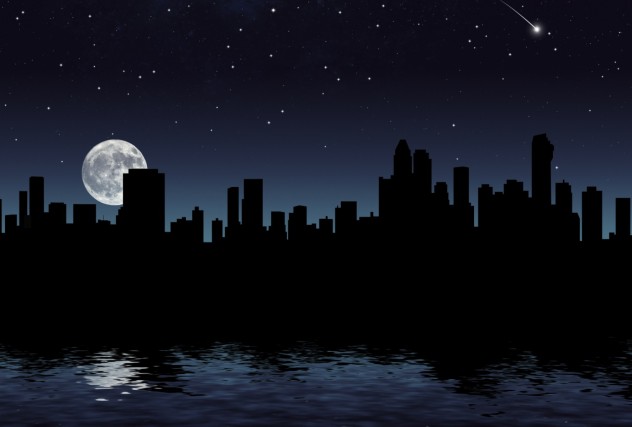
On November 9, 1965, a giant blackout affected the northeast region of the US. New York, New Jersey, Rhode Island, Vermont, Connecticut, New Hampshire, and Massachusetts were all affected, as well as parts of Ontario, Canada. In total, over 30 million people found themselves without electricity for over half a day. Being left with nothing to do, people started getting freaky in the dark which led to a big spike in birthrates nine months later. This idea was mostly promoted by several articles in the New York Times, and now it’s generally accepted that blackouts always lead to babies . . . even though the myth was debunked.
According to the New York Times author, several hospitals reported significant increases in daily births in August 1966. However, a demographic study showed that particular period of time experienced a birthrate no greater than the years before. In fact, precisely 267 days after the night of the blackout, and the supposed date of conception, the number of births was lower than the previous year.
In addition to this, a sociology paper later went into details as to why a blackout would not necessarily lead to more babies. For starters, the blackout of 1965 occurred around 5:00 PM. This meant that many of the affected people were either stuck during their commute or had to stay at work. Furthermore, while a blackout might encourage more sex, it doesn’t prevent people from using contraception or not carrying a pregnancy to term.
7Rosa Parks On The Bus
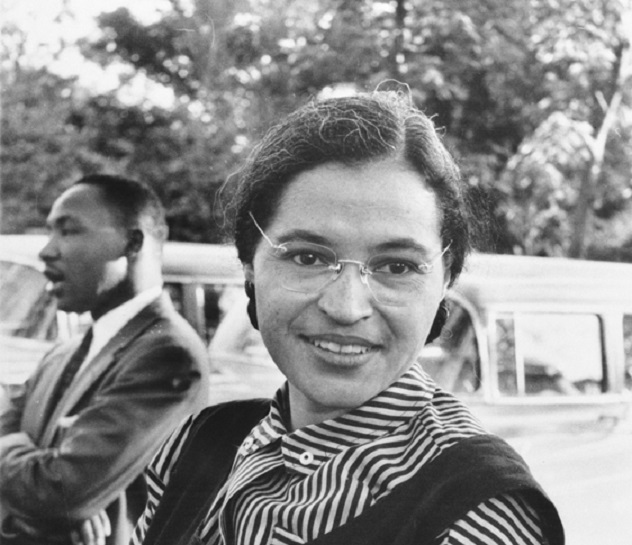
Nobody is here to take away from Rosa Parks’s actions or the impact that they later had on society. Her refusal to give up her bus seat for a white man had a major influence on the civil rights movement in the US. However, Rosa is often portrayed as a simple seamstress who was exhausted after a hard day’s work on December 1, 1955 and was simply tired of giving in to another injustice caused by racism. She never had any intention or idea what the consequences of her actions might be.
That wasn’t really the case. In 1932, Rosa Parks married a local member of the National Association for the Advancement of Colored People (NAACP) and had been active with the organization and the civil rights movement since the 1940s. In fact, when the bus event happened, Rosa was secretary to local NAACP leader E.D. Nixon.
What’s more interesting is that Rosa Parks was not the first black woman to do what she did. In fact, just nine months prior, in the same city of Montgomery, Claudette Colvin also refused to give up her seat for a white person. Unfortunately for Colvin, at the time of the event she was just 15 years old and pregnant with the child of a married man. The NAACP felt that the scandal surrounding her would not be beneficial for their cause so they chose to wait until someone else repeated the stunt.
6Bridge On The River Kwai

If what you know about the bridge on the River Kwai comes from the movie (or the book it is based on), then you’re going to get a few things wrong. For starters, the story depicts the struggles of Allied prisoners of war (POWs) forced by Japan to build the Burma railway. Because of this, some people incorrectly assume the river in question is in Burma when it’s actually in Thailand.
A bigger problem is the fact that there never was a bridge on the River Kwai. That particular river, the Kwai or Khwae Noi, ran parallel to the railway. The river with the bridge was called the Mae Klong. However, once the movie won Oscars, the river became a popular tourist spot. People from all over the world came to see the bridge, but they were all going to the wrong place—the River Kwai. To address this issue, the Thai government renamed that section of the Mae Klong to Kwai Yai.
The story of the Allied POWs presented in the book and movie differs significantly from reality, particularly the portrayal of the Allied commander, played by Alec Guinness in the movie. The fictional Colonel Nicholson was portrayed as a stereotypical, snobbish British officer who ended up collaborating with the Japanese out of pride. The actual Allied senior officer, Philip Toosey, was exactly the opposite. He refused special treatment for officers, did everything he could to ensure the well-being of his men, and caused sabotage and delays whenever possible.
5Spirit Of ’76
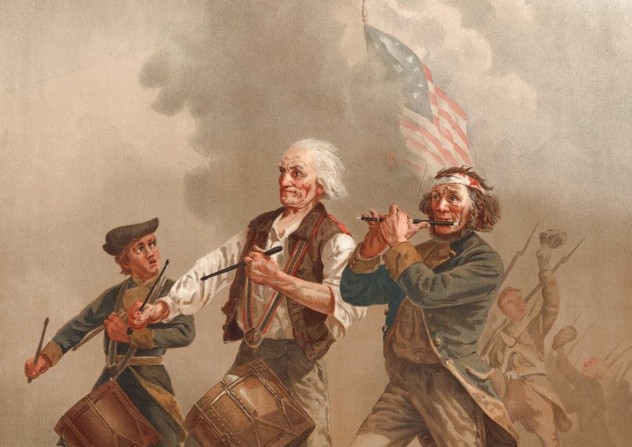
The “Spirit of ‘76” refers to the patriotic zeitgeist surrounding the American Revolution. It was an idea made popular by Thomas Jefferson and later represented the basis for an inspirational painting (above) and a couple of movies. Richard Nixon even changed the name of Air Force One to the “Spirit of ‘76.”
Supposedly, this patriotic sentiment inspired every red-blooded American to fight for freedom. And this was true but only for a couple of months. In 1775, voluntary recruitment did, indeed, skyrocket. All the New England colonies had thousands of men taking up arms, and it looked like the British didn’t stand a chance. Bizarrely, General Washington wasn’t very happy with this development. He found the idea of completing the army with volunteers to be disheartening. Washington realized that, once that initial emotion passed and people got a feeling of what war was actually like, most of them would go back home or to their “chimney corner,” as Washington put it.
Washington was right. By 1776, many colonies had to start offering bounties of cash or goods in order to fill up their ranks in exchange for one year of service or less. The next year, Congress established a minimum term of three years and bounties became indispensable—otherwise nobody would join. That still wasn’t enough, and conscription was enforced by many states by 1778. Also in 1778, several states decided to let black men join the army, a move that was initially forbidden by Congress.
4Pocahontas
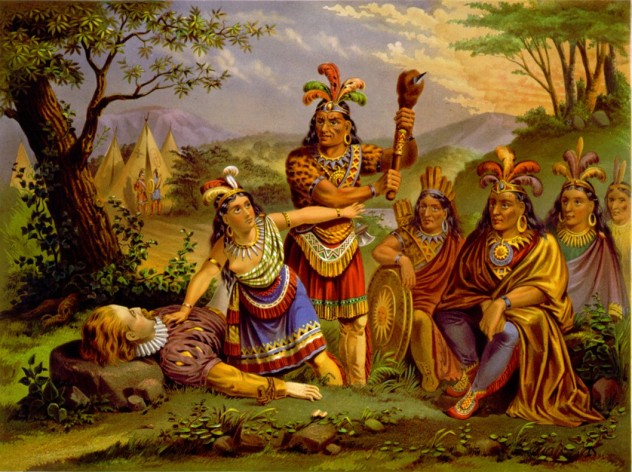
Everything most of us know about Pocahontas is wrong, and that’s because most of what we know comes from the 1995 Disney movie. Some might argue that we shouldn’t be learning history from a movie to begin with, but the main selling point was that Disney was basing their movie on a real character, something that hadn’t been done before. People will be forgiven for also expecting some historical accuracy.
Let’s start with the basics. Pocahontas wasn’t her name. Her name was Matoaka; “Pocahontas” was a nickname meaning “naughty one” or “playful one.” And she (probably) never saved John Smith’s life by putting her head on top of his own. The only source we have of the incident is Smith himself, and he isn’t very credible. Particularly, he makes no mention of Pocahontas or the near-death experience in his original journals and describes the Powhatan people as nothing but friendly. It was much later, in 1616, when Pocahontas came to England where she enjoyed some fame that Smith wrote a letter to Queen Anne describing the event.
Despite the love story between Smith and Pocahontas in the movie, nothing happened in real life since she was only 10 or 11 years old at the time. And the real Pocahontas ends up kidnapped at age 17 by the English and kept prisoner for a year. During this time, she ended up marrying John Rolfe, they had a child together, and eventually moved to London where Pocahontas became Rebecca Rolfe.
3The Alamo

The Battle of the Alamo is right up there with the best patriotic stories that the US has to offer. It’s considered a pivotal point in the Texas Revolution, one which inspired Texans (white residents of Mexican Texas) everywhere to push back the Mexican forces in favor of independence and later annexation to the US. Given its near-mythical status, it’s not surprising that some facts have been blurred over the years.
One fact that gets left out of the history books was that slavery was an important contributor to the Texas Revolution. Mexico was going through an abolitionist period where laws aimed to end slavery had been passed. This was a problem as slavery was big business in Texas. Attempts of varying success were made to take advantage of loopholes or receive exemptions, but the issue remained a bone of contention for many Texans.
As for the fight itself, the biggest myth about the Alamo was that nobody on the Texas side survived. People say everyone either died fighting or was executed afterward, but this is not true. Roughly 20 people were spared and allowed to leave. Most of them were women and children, but Joe, the slave of Commander William B. Travis, also survived. The most famous casualty of the Alamo was Davy Crockett, a frontier hero who supposedly died swinging his rifle surrounded by dead Mexican soldiers. However, some sources claim that Crockett was actually captured and executed, and one highly controversial source even made the claim that Crockett surrendered.
2The Great Escape

“The Great Escape” refers to an important historical event from World War II that was the basis for a book which later turned into a popular war movie starring Steve McQueen. In that regard, it is very similar to Bridge on the River Kwai. However, that book was mostly fiction in a real setting. The Great Escape, on the other hand, was written by Paul Brickhill, an Australian writer who was a fighter pilot during the war and part of the Stalag Luft III POW camp at the time of the famous escape.
Even though Brickhill gives a firsthand account of the events that happened at the camp, the production team had to take some liberties with the movie in order to add commercial appeal, such as adding Americans. The film features American POWs prominently with Steve McQueen front and center. In reality, no Americans took part in the escape because all the Americans at the camp had been transferred prior to the event. And the only three men out of 76 who managed to escape were Norwegian and Dutch. The Harry Tunnel is pictured above.
Now that we’ve dealt with the stars, we might as well move on to the most famous scene of the movie—the motorcycle chase. Although it became one of the most iconic scenes in cinema and made Steve McQueen synonymous with cool, nothing of the sort ever took place. Not one of the 76 POWs attempted to escape by motorcycle. The whole scene was added at McQueen’s insistence because he was jealous of the screen time James Garner’s character was getting.
1Orson Welles’s The War of the Worlds
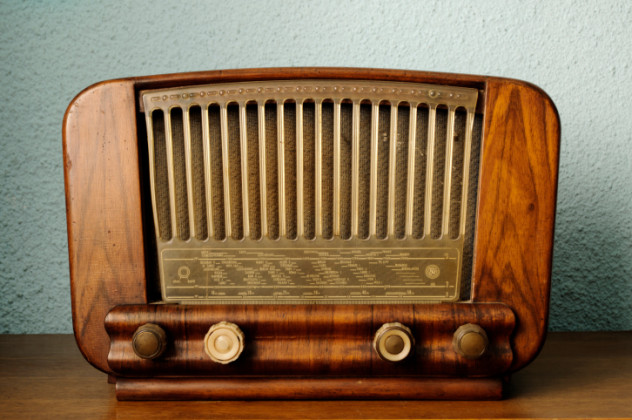
The story has been mentioned and parodied so many times that it hardly needs an introduction. A young Orson Welles achieved national notoriety when he did a radio drama based on H.G. Wells’s The War of the Worlds that was so convincing that he caused mass panic because everyone thought we had been invaded by Martians. However, while there is some truth behind the story, the extent of its impact has been widely exaggerated.
It’s usually accepted that newspapers were mainly responsible for perpetuating this myth. Back then radio was still the new kid on the block while printed media was the old timer trying hard to maintain superiority. Naturally, journalists regularly pounced on any opportunity to make radio look bad. One Daily News editor later recalled in a memoir that the streets of Manhattan were completely empty while the show was being broadcast. Even so, just a few hours later, that same newspaper was accusing radio of stirring “terror through the US.”
Not only was there no panic, but few people even listened to the program to begin with. It didn’t have a large audience. The C.E. Hooper ratings service indicated that only 2 percent of 5,000 listeners that night indicated that they tuned in to the Orson Welles program, and none of them thought it was a real news bulletin. Add to this the fact that CBS never wanted to trick people, and disclaimers that the show was fictional aired before and after each commercial break.
Radu really likes learning about weird history. Tweet him your favorite obscure history fact.



